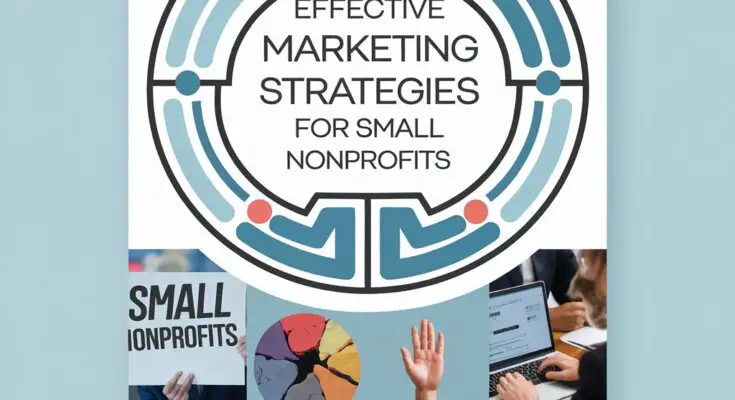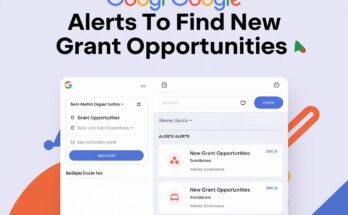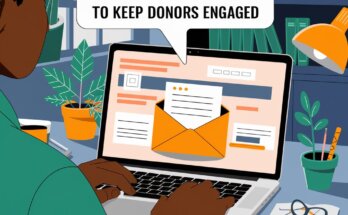Running a small nonprofit is no small task. You’re juggling tight budgets, limited resources, and a small team—yet you’re still expected to make a big impact. That’s where smart marketing comes in. Effective marketing strategies for small nonprofits aren’t just about flashy ads or expensive campaigns.
In fact, with the right approach, even the smallest nonprofit can boost its visibility, engage donors, and ultimately grow its impact without breaking the bank. The key is knowing where to focus your efforts and how to maximize the resources you already have.
In this guide, we’ll break down actionable marketing strategies that any small nonprofit can implement immediately. You don’t need to be a marketing expert or have a huge budget to see results.
We’ll show you how understanding your audience, telling compelling stories, and leveraging tools like social media and email marketing can help take your nonprofit’s marketing efforts to the next level.
Let’s break it down step by step.
1. Know Your Audience (Who Are You Really Speaking To?)
Understanding your audience is the foundation of any marketing strategy. You might be tempted to cast a wide net and try to reach everyone, but that’s not effective.
Instead, focus on a specific group of people who are passionate about your cause. These could be donors, volunteers, or beneficiaries.
Ask yourself:
- Who benefits from our mission?
- Who would be motivated to support us?
- Where do they hang out (social media, local community events, etc.)?
For example, if your nonprofit focuses on environmental conservation, your audience might include local nature lovers, families, and eco-conscious businesses. Tailor your message and marketing efforts specifically for them.
Pro Tip: Create a Donor Persona
Develop a “persona” for your ideal donor. This is a fictional character that represents the traits of your typical supporter. Think about their age, profession, interests, and what motivates them to give. Once you have this profile, it becomes much easier to create messages that resonate with them.
Imagine trying to sell your cause to someone who doesn’t care—sounds impossible, right? That’s why focusing on the right audience is crucial!
2. Leverage the Power of Storytelling
People connect with stories. They want to feel emotionally invested in the cause, and what better way to do that than by telling compelling stories about the work you’re doing and the impact it’s making?
How to get started:
- Share stories of the people or communities you’ve helped. Make it personal.
- Highlight the journey of your nonprofit, the challenges you’ve overcome, and the milestones you’ve achieved.
- Use visuals like photos and videos to make the story come alive.
One of the most powerful tools in nonprofit marketing is video storytelling. Even a short, simple video on your smartphone can effectively communicate your mission and create an emotional connection with potential supporters.
Example:
Instead of saying, “We provide clean water to communities in need,” tell the story of a young child who no longer has to walk miles every day to collect dirty water. Show how your organization changed their life.
People may forget what you do, but they will never forget how your story made them feel.
3. Utilize Social Media (Without Overcomplicating It)
You don’t need to be on every social media platform, but you should be on the ones where your audience spends their time. Facebook, Instagram, and LinkedIn are great starting points for most nonprofits.
Here’s how to maximize social media:
- Be consistent: Post regularly to keep your audience engaged.
- Use visuals: Photos and videos consistently get more engagement than text-only posts.
- Tell stories: Social media is perfect for sharing the personal stories we discussed earlier.
- Engage with your audience: Respond to comments, thank donors publicly, and create a sense of community.
If you’re short on time, consider using tools like Hootsuite or Buffer to schedule posts in advance. That way, you can maintain a regular social media presence without constantly being online.
Social media is your nonprofit’s megaphone—it amplifies your message far and wide, even on a small budget.
4. Email Marketing: The Tried-and-True Strategy
Email marketing may seem old school compared to social media, but it remains one of the most effective ways to engage supporters. Emails allow you to have a more personal conversation with your audience, and they’re incredibly cost-effective.
Tips for email marketing:
- Build a strong list: Encourage website visitors to sign up for your newsletter in exchange for helpful resources or updates.
- Segment your list: Tailor your messages based on the interests of different groups—donors, volunteers, and beneficiaries may all need slightly different information.
- Include a clear call to action (CTA): Whether it’s donating, volunteering, or sharing your newsletter, make it clear what you want your readers to do.
Example:
Use subject lines that grab attention, like “Here’s how your donation changed someone’s life this week!” or “Want to make a difference in 5 minutes? Here’s how.”
Your supporters want to feel involved. Keep them in the loop with regular, engaging email updates that show them their impact.
5. Collaborate With Local Businesses and Influencers
Local partnerships can significantly increase your nonprofit’s visibility. Businesses, schools, and community leaders are often eager to support nonprofits, especially when there’s a win-win for both parties.
Here’s how to make partnerships work:
- Offer mutual value: When approaching businesses, highlight what they’ll gain from the partnership. It could be positive PR, brand alignment with a good cause, or tax benefits.
- Collaborate on events: Partnering with local businesses for fundraising events or campaigns increases your reach while saving costs.
- Work with influencers: Local influencers, bloggers, or social media personalities can help promote your cause to their audience. Be sure to choose influencers whose values align with your mission.
Example:
A small animal shelter could partner with a local pet store. The store could sponsor an adoption day, and in return, the shelter promotes the pet store to its followers.
Two heads (or businesses) are better than one—collaborations can open up doors you never knew existed.
6. Host Events, Both Virtual and In-Person
Hosting events is one of the best ways to engage your community, spread your message, and raise funds. With virtual events becoming more popular, you can now engage supporters from all over the world.
Event ideas for small nonprofits:
- Fundraisers: Host a virtual 5K, a raffle, or an online auction.
- Workshops/Webinars: Teach something valuable that relates to your cause. For example, if your nonprofit focuses on education, you could host a free virtual class.
- Community events: Get local businesses involved in an event for your cause.
Example:
If you run a nonprofit that promotes literacy, you could host a “Reading Marathon,” where supporters can pledge a donation based on the number of books read by participants.
Whether virtual or in-person, events create an opportunity for people to connect with your cause and take action.
7. Optimize Your Website for SEO (So Google Can Find You)
Search engine optimization (SEO) might sound like technical jargon, but it’s essential for increasing your nonprofit’s online visibility. Simply put, SEO helps your nonprofit show up on Google when people search for causes like yours.
Here’s how to improve your SEO:
- Use relevant keywords: Identify the words and phrases people are searching for related to your nonprofit. Use these in your website content, blog posts, and titles.
- Create a blog: Regularly post articles or updates that include your target keywords. These could be success stories, how-to guides, or updates on your programs.
- Optimize for mobile: Many people will visit your website on their phones. Make sure your site is easy to navigate on mobile devices.
Example:
If you run a nonprofit focused on mental health, your keywords might include “mental health resources,” “mental health support,” or “how to support mental health.”
Don’t miss out on potential supporters searching for your cause online. A strong SEO strategy puts your nonprofit right in front of them.
8. Use Google Ad Grants (Free Advertising!)
Did you know Google offers $10,000 per month in free advertising to qualifying nonprofits? This program, called Google Ad Grants, allows you to place ads on Google search results. Imagine the exposure your nonprofit could get!
How to make the most of Google Ad Grants:
- Target the right keywords: Use specific keywords that are related to your nonprofit’s mission.
- Create compelling ads: Focus on a clear message with a strong call to action, such as “Donate today to make a difference” or “Get involved with our mission.”
- Drive traffic to your donation page: Make sure the ads link directly to where people can take action, like donating or volunteering.
$10,000 in free advertising each month? Yes, please! Don’t miss this opportunity to get your nonprofit in front of new eyes.
Final Thoughts: Take Action Today!
Marketing may seem daunting, but with the right strategies, your small nonprofit can achieve big things.
Focus on understanding your audience, telling powerful stories, engaging through social media and email, building partnerships, and leveraging online tools like SEO and Google Ad Grants.
Your cause is worth it—start implementing these simple strategies today and watch your nonprofit’s reach grow!
To stay updated on the latest marketing tips and resources for nonprofits, subscribe to the Nonprofit Navigators Newsletter. We’ll guide you every step of the way toward creating a successful, thriving nonprofit. You’ve got this!




